Ultimate Guide to Baseball Pitch Grips

By Chris Langin, Pitching Coordinator & edited by Michael O’Connell Director of Education, updated 4/22/2022
Baseball pitch grips spark a special interest among pitchers for a good reason. This has been fueled by stories of pitchers developing dastardly pitch profiles with seemingly simple changes. While there are incredible resources that detail different types of grips across the league, such as Pitching Ninja’s Dropbox, why are these so popular? Everyone wants to know the best baseball pitch grips, and if you can find a pro that throws a specific grip, you can throw a pitch with that grip.
This blog will discuss our system for tracking and measuring pitch grips. At Driveline, we have taken pictures and measurements of every athlete that has walked into our facility over the last few years. After explaining our system, which accounts for minor variations in grips, we’ll walk through the most common variations and pitch grips for the most popular pitches.
Why did we create this system?
We wanted to group pitches to match players with grips faster than before. So we could analyze them in much more specific ways than ‘Clayton Kershaw’s curveball.’
The rest of the blog will discuss the pieces we find most important to track—or be aware of—when figuring out how to adjust a pitcher’s arsenal.
Different Pitch Types & Pitch Grips
With the increase in pitch-tracking technology, different pitches and pitch type variations have grown. With the ability to measure movement down to the inch, coaches and players can now compare and contrast many more pitch types. Small changes in movement can matter a lot, and pitchers can often have different names for pitches that can move the same. Even with these issues, we can break down the different types of baseball pitches into six main pitch types, which we’ll break down here along with common adjustments to each.
As we’ve collected more information on baseball pitch grips, it’s not just the pitch grip and release that’s essential, but tiny variations can help pitchers gain better command or more movement.
From a player’s perspective, minor adjustments in how a pitcher grips the seams of a ball can create more movement than expected.
How to Pick a New Pitch Grip
Picking a new pitch isn’t just copying a grip that you find here but also understanding how to think through minor grip variations to see if you can get it to work for you. Things may not click right away, so we should expect tweaks as we’re looking to learn a new pitch.
The grip is only as important as the movement profile it creates. You want to know the grip of a specific pitch to try and get the movement of that pitch. You want to know Mariano Rivera’s cutter grip and Clayton Kershaw’s curveball grip so you can throw it. Learning a new pitch is much more than just trying out a new grip!
When logging grips, we want to capture as much relevant detail as possible because if we can find the right grip and release, we can throw a nasty pitch.
How to Adjust Baseball Pitch Grips using Different parts of Baseball Seams
There are several factors to consider when changing grips. Beyond trying a brand new pitch grip, we want to count minor adjustments that can result in different movements. We want to track these changes because we want to answer the question – what is the best pitch grip per pitch type for this pitcher right now?
We’re trying to balance holding the ball with a specific grip, a player’s comfort, and a specific release of the baseball to create a successful pitch.
Below are the five main factors we discuss when looking to adjust baseball pitch grips.
Tilt and Ball Position – inward/outward tilt or lateral shift towards pinky/glove side
Pitchers may adjust a base grip outward/inward to slightly change seam orientation and how their fingers come off the ball.
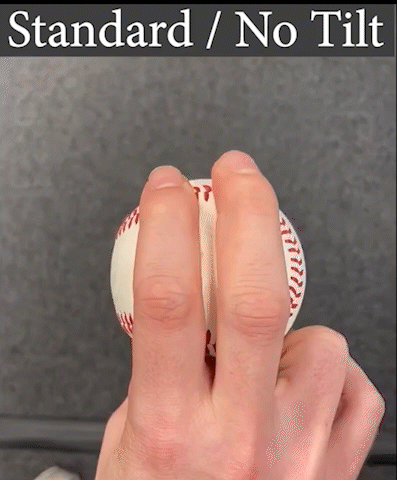
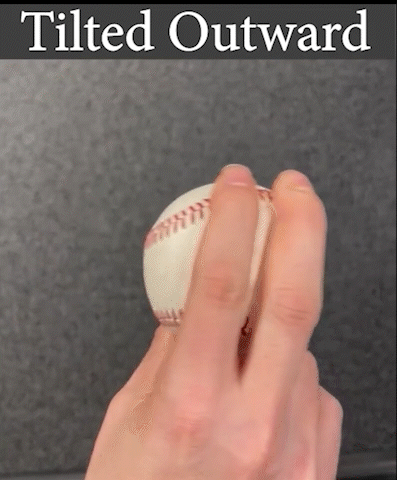
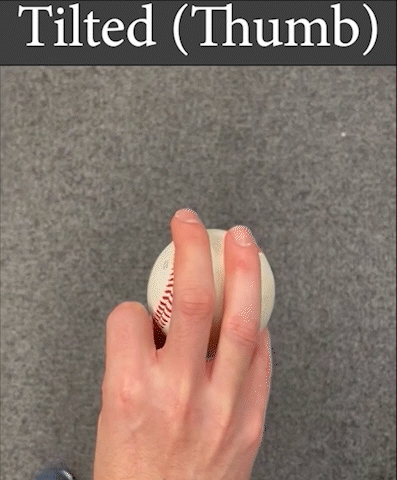
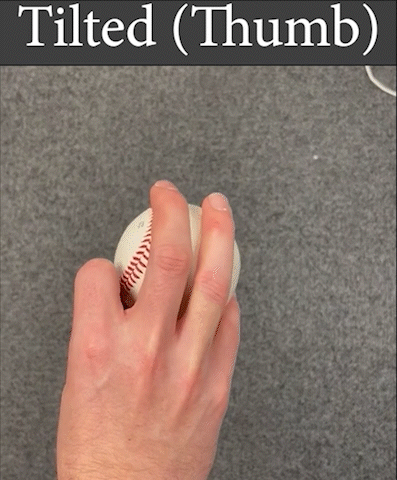
Fingertip Pressure (coaching cues)
If an athlete is insistent that their grip is comfortable but doesn’t move well, a simple grip pressure adjustment might do the trick. Though these adjustments may depend on the specific pitch you are working on, cueing for different pressure with the index or middle finger can result in a change.
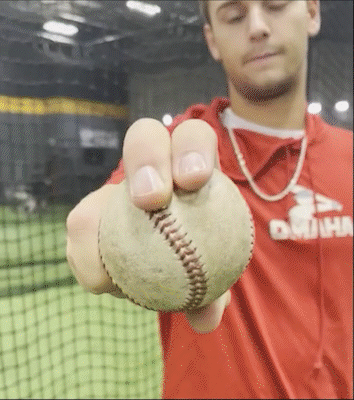
An athlete cued to “throw a sideways curveball” is likely to throw a pitch with a different movement profile compared to being told to throw the ball “as hard as humanly possible.”
Simple cues like “stay through the ball,” “throw the back of your hand at the target,” or “throw it like a football” may all be helpful cues for certain pitches. We feel it’s best to be flexible with cues and worry less about forcing one cue to work.
Thumb Position – (0/25/50)
Thumb positioning potentially influences how the ball comes out at release. Pitchers that place the thumb underneath the ball on a given grip may find it easier to stay through the ball at release. Minor adjustments to the side of the ball may make it easier to get around the ball.
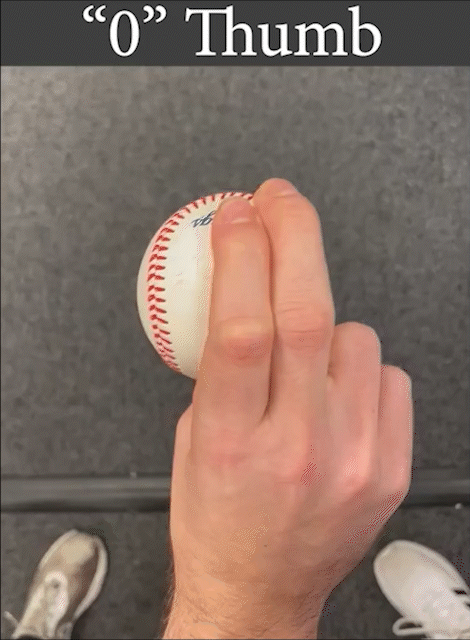
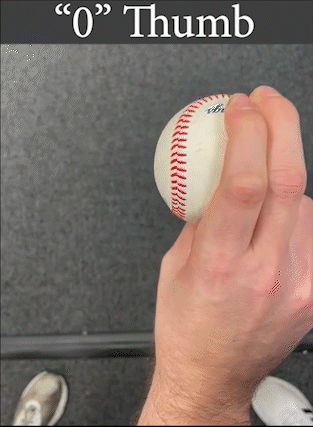
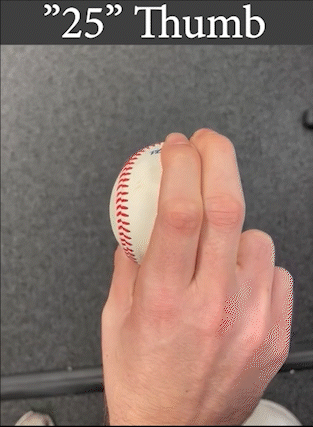
Additionally, we’ll look to define whether or not the thumb is “flat” or “tucked.”
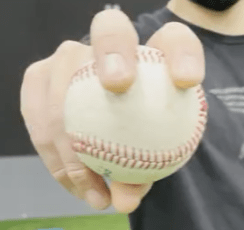
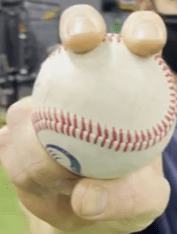
Spike Alterations
Whether a pitcher uses a spike grip often depends on fingertip pressure and the type of movement profile they are looking for.
Spiking the ball may help get more middle fingertip pressure on the seam without having a coach cue it.
Additionally, the index finger can interfere with the spin direction of a breaking ball when it’s released. Applying a spike alternative may result in a more downward movement to get more drop on a curveball.
Taking a spike variation off a pitch may result in a more upward spin direction, which could benefit when working on a slider.
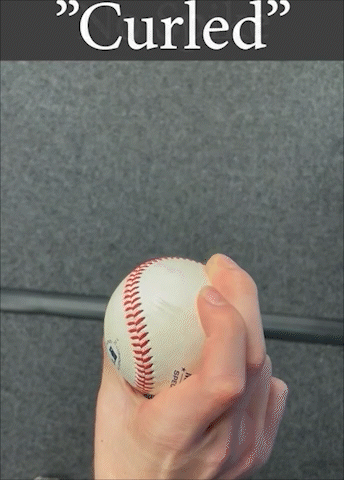
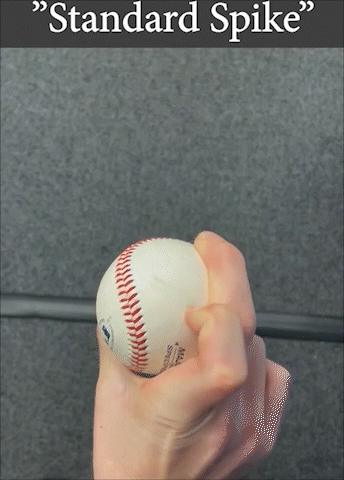
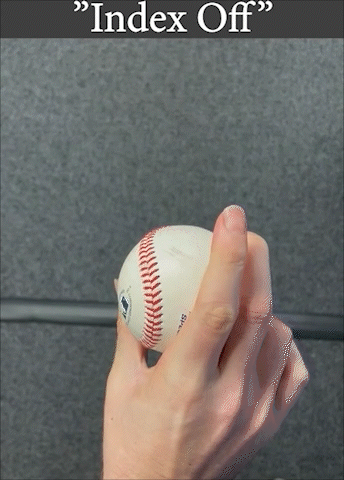
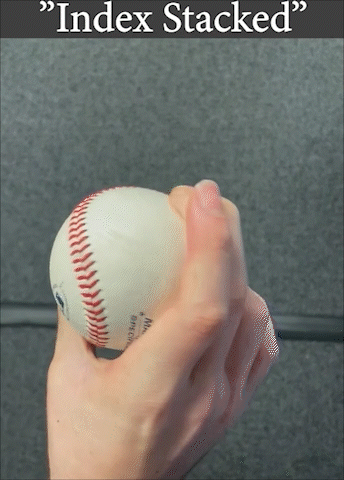
Depth of Grip
We believe grip depth is a big part of grip comfort. Different hand sizes may be a reason for changes in grip depth. Some pitchers may need to choke a four-seamer in the palm for better feel. Others need to leave some space between the palm and the ball. Changing the depth of the grip may also allow an athlete to find a seam to pull off of or get the thumb to a more comfortable location.
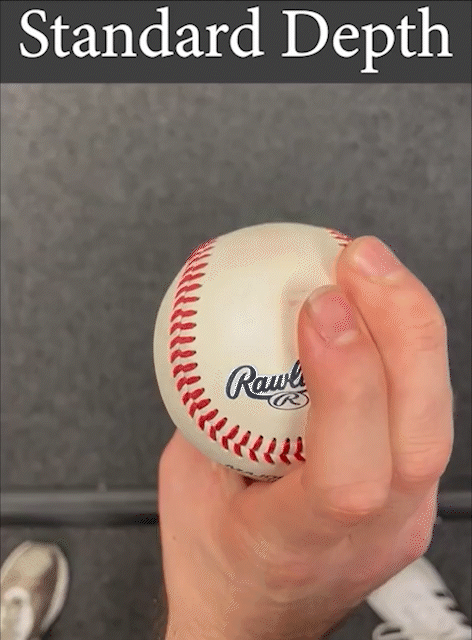
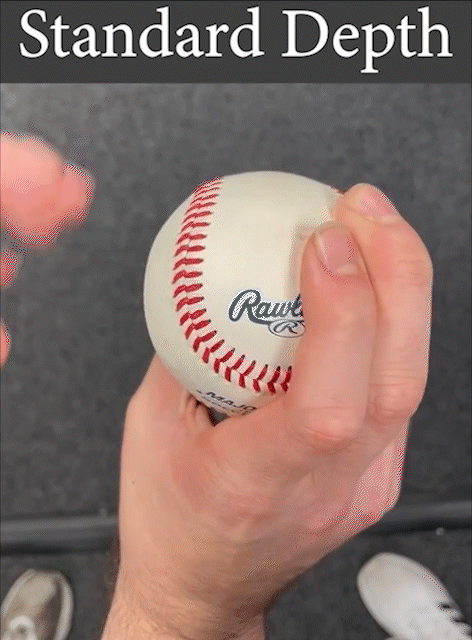
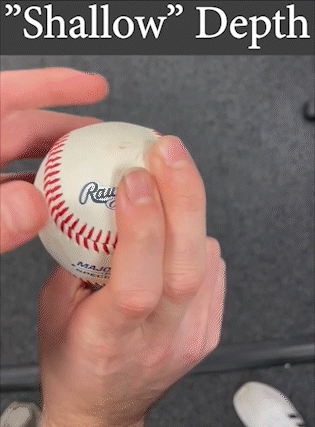
This is a lot of pitch grips and a lot of variations! We want to ensure that we’re giving our athletes the best information to make better decisions faster. Now that we’ve gone over our system of tracking grips let’s get into the most common pitch grips for different baseball pitch grips.
Four-Seam Fastball Pitch Grips
Four-seam grips are relatively standard, and we see two main variations. These variations are the fingers’ width, either more narrow or wider, and whether the seam is on the fingertip or first knuckle.
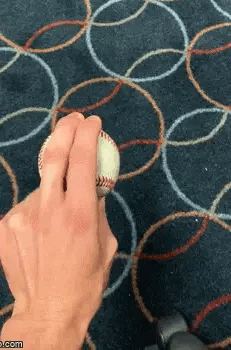
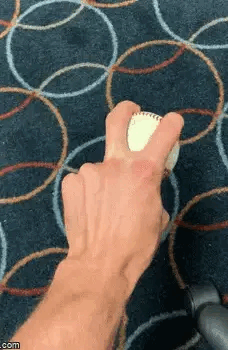
Tilt and ball position
We don’t see many adjustments in tilt. But there are differences between athletes in whether their fingertip is on the seam or their first knuckle.
Fingertip pressure (coaching cues):
“Stay behind the ball,” “Pull the ball down,” “Apply more pressure on the ball,” “Hold the ball tighter,” “Pronate sooner.”
Thumb Position
Thumb positions are either flat or tucked. Pitchers that place the thumb underneath the ball may find it easier to stay through the ball at release.
Spike Alterations
We don’t see any spike variations of four-seam fastballs.
Depth of Grip
Some adjustments in depth of grip depend on comfort, hand size, and if minor changes in grip result in movement changes. How deep a player holds the ball is often an adjustment that goes hand in hand with their thumb position.
Want to learn more about the movement of a four-seam fastball, more grips, and how to throw one?
Two-Seam Pitch Grips or Sinker Pitch Grips
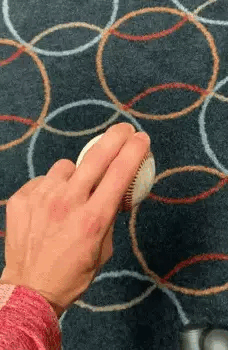
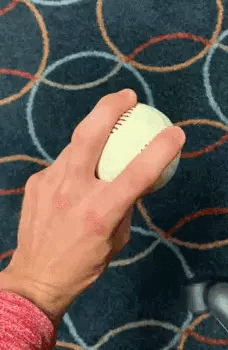
Tilt and ball position
Seams and tilt can be important for two-seam pitches. Because of seam-shifted wake, minor adjustments on the seam and slight cut can cause two seamers to move more than expected.
Fingertip pressure (coaching cues)
“Stay through it,” “Get over the top of it,” “Roll over the ball.”
Thumb Position
The most common thumb positions are either flat or tucked. Pitchers that place the thumb underneath the ball may find it easier to stay through the ball at release.
Spike Alterations
We don’t see any spike variations of two-seam fastballs.
Depth of Grip
Some adjustments in depth of grip depend on comfort, hand size, and if minor changes in grip result in movement changes. How deep a player holds the ball is often an adjustment that goes hand in hand with their thumb position.
Want to learn more about the movement of a two-seam, more grips, and how to throw one?
Cutter Pitch Grips
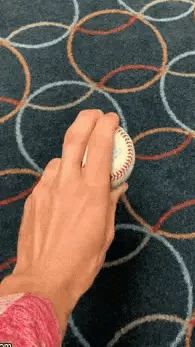
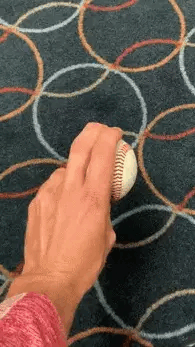
Tilt and ball position
Pitchers will often tilt a four-seam grip outward for their cutters to get on the side of the ball while still feeling like a fastball. You can see this in the first cutter grip on the left. The second grip is similar to a two-seam fastball grip. The different movement comes from a different release.
Fingertip pressure (coaching cues)
Cueing ‘Focus on middle finger pressure’ should help a pitcher get around the ball at release.
Other cues include “Think palm facing first base” and “Think slider.”
Cues for cutters are relative to their starting point. We should expect different cues if you’re trying to turn a four-seam fastball to a cutter or have a slider get less movement.
Thumb Position
Pitchers trying to turn a slider into a cutter may find it helpful to move their thumb more underneath the ball.
Spike Alterations
Depth of Grip
Want to learn more about the movement of a cutter, more grips, and how to throw one?
Slider Pitch Grips
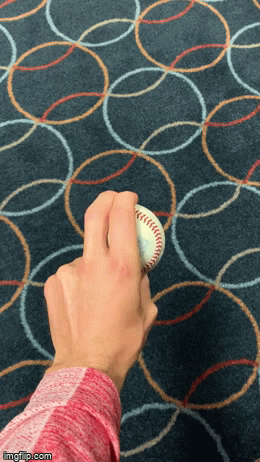
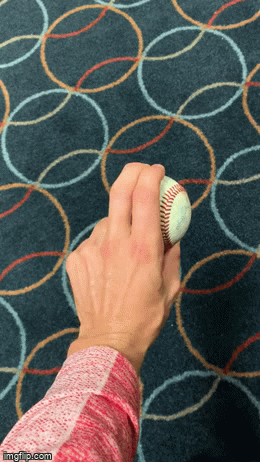
Tilt and ball position
Fingertip pressure (coaching cues) – A pitcher cued to emphasize middle finger pressure may get around the ball more at release.
“Throw the back of the hand,” “Throw it like a football,” “Pull on the side of the ball,” and “Slash the zone in half diagonally.”
Pitchers that prioritize index finger pressure on a slider may shift the spin direction of a pitch upward and take a pitch with slurve characteristics closer to slider territory.
Thumb Position
Moving their thumb more to the side of the ball may help drive a cutter into a slider.
Spike Alterations
Depth of Grip
Want to learn more about the movement of a slider, more grips, and how to throw one?
Curveball Pitch Grips
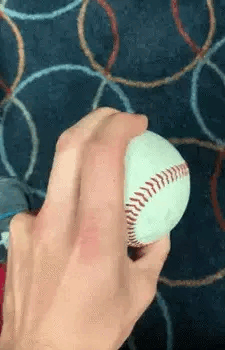
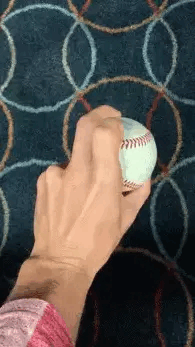
Tilt and ball position
Fingertip Pressure (coaching cues)
“Get in front of the ball,” “Spin the ball with your middle finger,” and “Throw with the back of your hand.”
Thumb Position
Spike Alterations
Spiking the index finger may help athletes put more pressure on the ball with their middle finger without a cue.
Depth of Grip
Want to learn more about the movement of a curveball, more grips, and how to throw one?
Changeup Pitch Grips
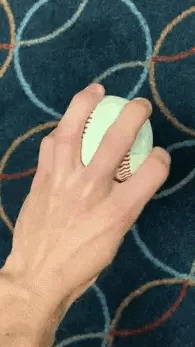
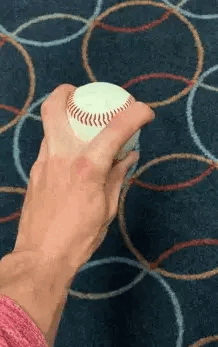
Tilt and ball position
For changeups, a pitcher with a 2-seam grip may laterally tilt the position of the fingers towards the thumb to get away from a seam at release and decrease raw spin.
Fingertip pressure (coaching cues)
“Roll over the ball,” “Throw it with your ring finger,” “Pronate sooner,” “Swipe inside of the ball,” “Think about having a flexible wrist.”
Thumb Position
Spike Alterations
Depth of Grip
Athletes may “choke” the grip deep in their path to lessen spin and velocity on the pitch. However, some athletes may achieve this by gripping the ball in their fingertips “like an egg”.
Want to learn more about the movement of a changeup, more grips, and how to throw one?
Want to experiment with different baseball pitch grips? Keep in mind how hard you are throwing!
How Fastball Velocity and Baseball Pitch Grips Change Pitch Movement
The most straightforward method of improving the “stuff” characteristics of fastballs and breaking balls is to throw harder.
Method 1 – Gain FB Velo 🔥🔥🔥
— Chris Langin (@LanginTots13) October 12, 2021
13/30 hurlers fell under this category. Simple, but effective.
This group also outpaces a linear models expectation for SL velo gains.
Controlling for SL movement, 1 FB tick tends to convert to ~.75 ticks to the Slider and ~8.5 units of Stuff pic.twitter.com/PjROUsie8k
There are a couple of reasons we want to keep this in mind.
First, velocity is still essential when discussing what makes an effective offspeed pitch.
Second, bullpens or pitch designs aren’t always thrown at game-like intensity. Velocities are generally down relative to in-game averages for a few reasons, including decreased adrenaline.
Pitchers may unintentionally slow down their delivery and pitch speed to try to make a shape ‘work’ to what they think it should do.
Intent level and how an athlete “feels” vary from session to session. Some pitch design sessions are thrown at 70% RPE, others at 95% RPE. Breaking balls will always play better in the 95% sessions, as there’s more fastball velocity to tradeoff to secondary offerings. However, we are primarily concerned with how the shape of the offering relates to that day’s fastball velocity.
The faster you throw your fastball, the harder we’d expect your breaking ball to be. Looking at MLB data, when pitchers gain one mph on their fastball, we see slider velo climb 0.75mph and improve in stuff+ by 8-10 units.
Changing Pitch Grips with a Rapsodo or Trackman
As we mentioned at the top, the pitch grip is important only because of the pitch movement. This makes testing pitch grips with something that can measure pitch movement, the best way to learn a new pitch.
At Driveline, we obtain a “baseline” profile of an athlete’s pitches when they enter the gym. We can then see how differing cues/grips impact the offerings relative to their baseline profile. Understanding where pitchers start gives both the coach and the athlete some additional context to rule out certain pitch shapes and easily recall optimal grip/cue combinations when they leave the facility or start to lose feel for the offering.
By logging this information, we can more confidently rule out that the athlete isn’t throwing a poor breaking ball due to a poor coaching process.
Without knowing what an athlete has tried before, it’s tough to know what changes to make.
Closing Thoughts
By controlling for and tracking all of the above, we aim to shed more light on what changes impact ball flight metrics and how to improve pitches faster.
This allows our athletes to be more efficient with their training economy, shortening the time it takes to learn a new pitch. Ultimately leading to the end goal of allocating more time towards mound development and the command of the offering.
Comment section